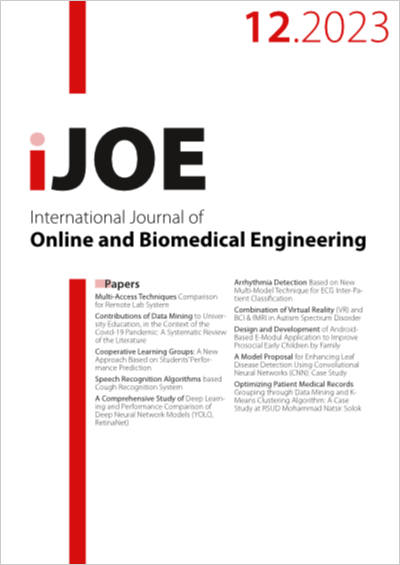Optimizing Patient Medical Records Grouping through Data Mining and K-Means Clustering Algorithm: A Case Study at RSUD Mohammad Natsir Solok
DOI:
https://doi.org/10.3991/ijoe.v19i12.42147Keywords:
Medical Records, Clustering, K-MeansAbstract
RSUD Mohammad Natsir Solok, located in Solok City, provides comprehensive individual health services within its premises, offering both inpatient and outpatient care with 24-hour service availability. Inpatient services encompass emergency care and basic health services. A crucial component of healthcare operations is medical records, which consist of documented information pertaining to patient identity, examinations, treatments, procedures, and other services rendered. Medical records are essential and should be meticulously created in written or electronic form to ensure completeness and clarity. One common challenge encountered in maintaining medical records is the presence of overlapping data. To tackle this issue, data mining techniques are employed, with clustering being the primary method of choice. The K-Means algorithm is specifically utilized for clusterization purposes. By applying this data mining process and grouping patient medical records, valuable insights into the patterns of disease spread across different villages can be obtained. After applying K-Means clustering method, four distinct clusters were identified. The first cluster comprises 562 items, the second has 406 items, and the third and fourth have 791 and 279 items, respectively. These findings can serve as a reference for the local government, particularly the Solok City Health Office, to facilitate disease prevention initiatives and awareness campaigns. Decision-making related to disease sources, diagnosis, age, and gender of the affected patient can be informed by this data analysis.
Downloads
Published
How to Cite
Issue
Section
License
Copyright (c) 2023 Dony Novaliendry, Tegar Wibowo , Noper Ardi , Tiolina Evi, Dwi Admojo

This work is licensed under a Creative Commons Attribution 4.0 International License.



